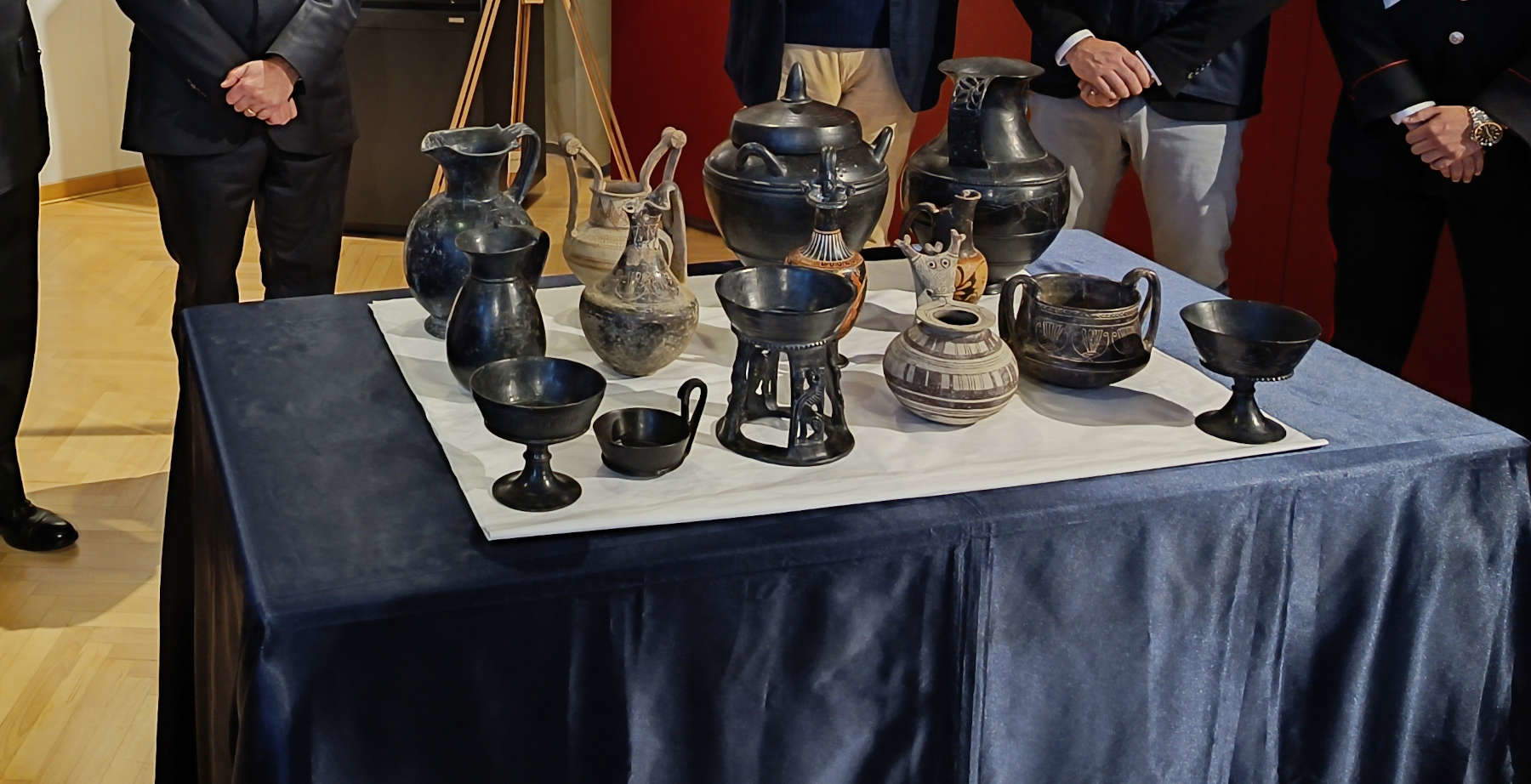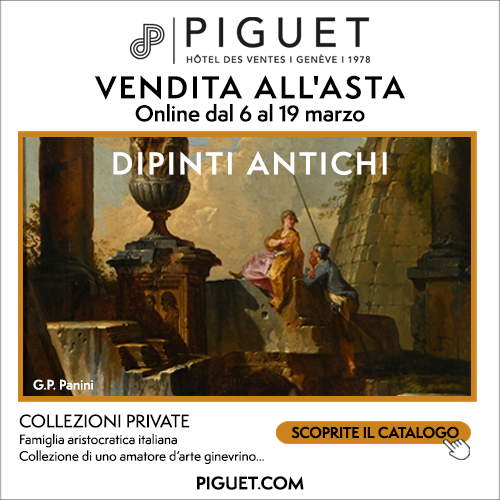Carabinieri deliver 14 valuable archaeological artifacts to Adria National Museum
This morning Carabinieri from the Venice Cultural Heritage Protection Unit handed over 14 valuable archaeological ceramics to the National Archaeological Museum in Adria (Rovigo). Present were the commander of the Carabinieri Nucleo Tutela Patrimonio Culturale of Venice, Maj. Emanuele the museum’s director, Alberta Facchi, the prefect of Rovigo Clemente Di Nuzzo, the mayor of Adria Massimo Burbujani, the regional director Musei del Veneto Daniele Ferrara, the provincial commander Carabinieri of Rovigo Col. Edoardo Campora, officials of the Ministry of Culture and some schoolchildren from the surrounding area.
The finds are representative of different ceramic classes referable to grave goods, and cover a time span from the 7th to the 4th century BC. An initial, more numerous nucleus exemplifying Etruscan production and a smaller nucleus of Apulian, Daunian, and Messapian production can be distinguished. The finds are the result of investigations directed by the Trieste Public Prosecutor ’s Office and initiated by the Venice TPC Carabinieri in September 2021, on the report of a Venetian scholar, when the goods were being offered for sale in the Trieste area by a trade outlet. Local searches and seizures were conducted in the provinces of Trieste and Bolzano.
During the course of the investigation, Militari del Nucleo CC TPC di Venezia availed themselves of technical and art-historical examinations carried out by archaeological officials of the Soprintendenza Archeologia, Belle Arti e Paesaggio for the Municipality of Venice and the Lagoon, which collaborates structurally with the Nucleo CC TPC di Venezia. These analyses ascertained that the goods came from Italian archaeological contexts.
In particular, the investigations conducted by the Venice CC TPC Carabinieri made it possible to ascertain that the archaeological artifacts in question, which were the subject of various alienations that also involved foreign countries, were not originally accompanied by the necessary documentation attesting to their legitimate ownership. Current regulations, in fact, provide on archaeological goods certainly or presumably coming from Italian territory a presumption of belonging to the State. The private individual who wishes to claim ownership of archaeological finds is required to provide proof that they were assigned to him by the State as a reward for fortuitous discovery; or that they were ceded to him, again by the State, as compensation, for the occupation of real estate; or that they were in his own, or others’ possession, at a date prior to the entry into force of Law No. 364 of June 20, 1909. In addition to the recovery of the described goods, the investigation led to the indictment of four people for receiving cultural property.
The recovery of archaeological artifacts that are part of the State’s cultural heritage represents one of the investigative guidelines that the CC TPC Venice Unit pursues, through constant checks at sector businesses, through the careful collection of reports from scholars and enthusiasts, thanks to the collaboration of the central and peripheral offices of the Mi.C. The return to the public heritage of these assets, material testimonies having civilizational value, brings back to collective enjoyment objects that tell the story of territories and communities.
Among the pieces is also a highly prized bucchero caryatid chalice, of which the first specimens appear in Caere around 630 B.C., probably behind a direct influence of oriental models, and then spread throughout southern Etruria, with reports also in Latium and southern Campania, and sporadic occurrences in inner Etruria, in Orvieto. Its use as a potorium vase seems unlikely, while the most likely function seems to have been as a lighting and/or smoke-burning tool. The use of such artifacts as containers for liquids intended for lustratio ceremonies has also been speculated.
Again, a beautiful bucchero amphora is representative of the so-called Bandhenkelamphora with flat handles, produced continuously between the early 7th and late 6th centuries BCE. The spread of these amphorae is concentrated mainly in southern Etruria, the Faliscan countryside, Latium and Campania. The decoration that insists on the belly is characterized by the presence of a central register with figured incised decoration, consisting of a feline, a deer and a goat gradient to the left, all depicted according to iconographic patterns well attested in Etruscan art between the late 7th and early 6th centuries B.C., on influence from Rhodian and Corinthian ceramics.
 |
| Carabinieri deliver 14 valuable archaeological artifacts to Adria National Museum |
Warning: the translation into English of the original Italian article was created using automatic tools. We undertake to review all articles, but we do not guarantee the total absence of inaccuracies in the translation due to the program. You can find the original by clicking on the ITA button. If you find any mistake,please contact us.





























